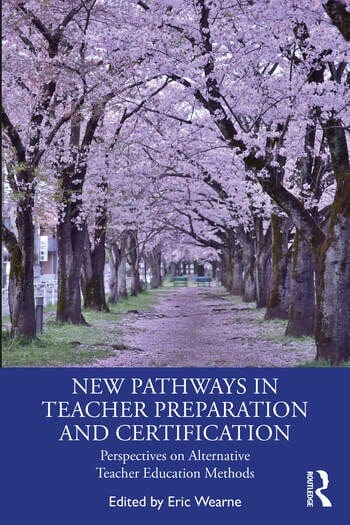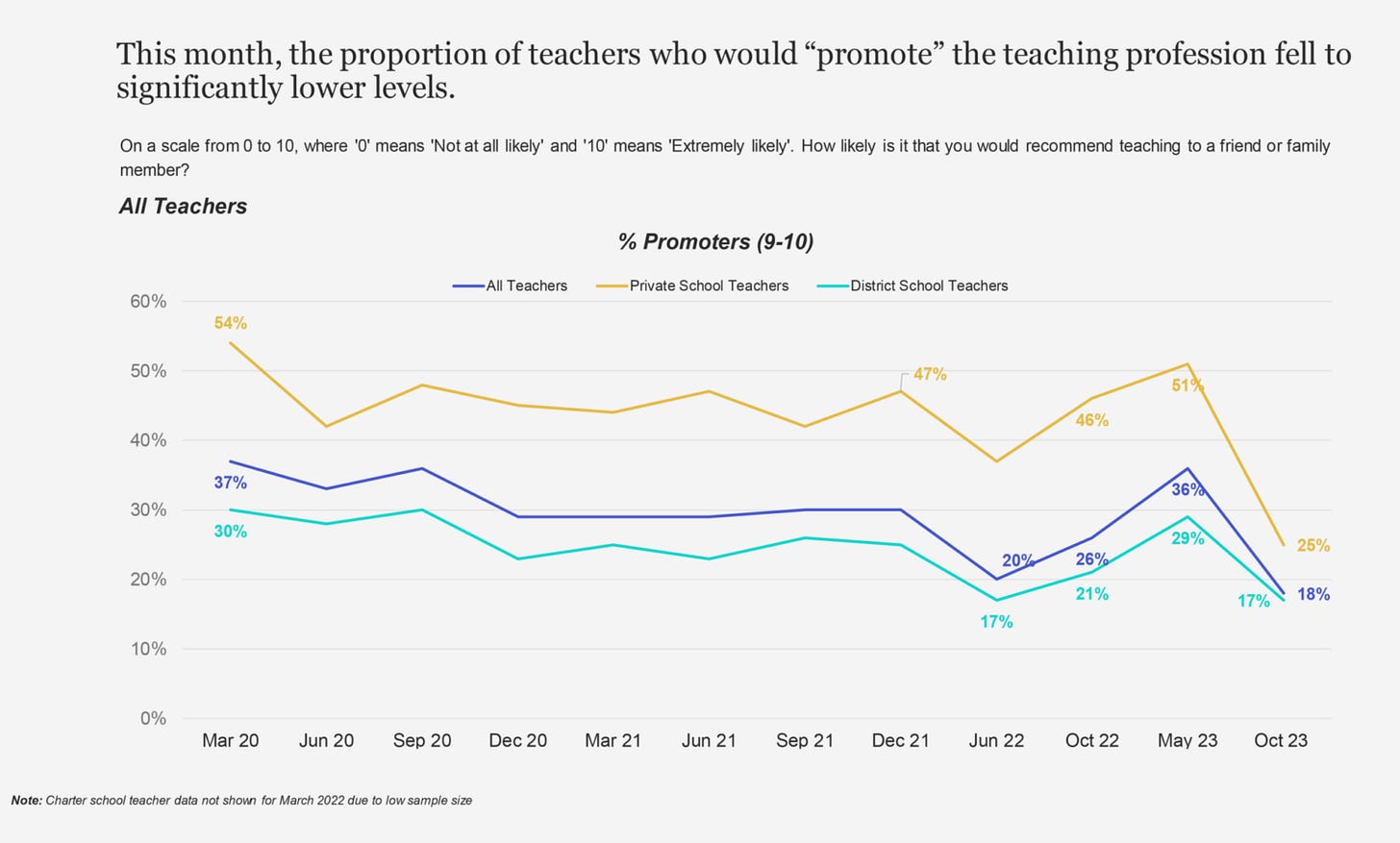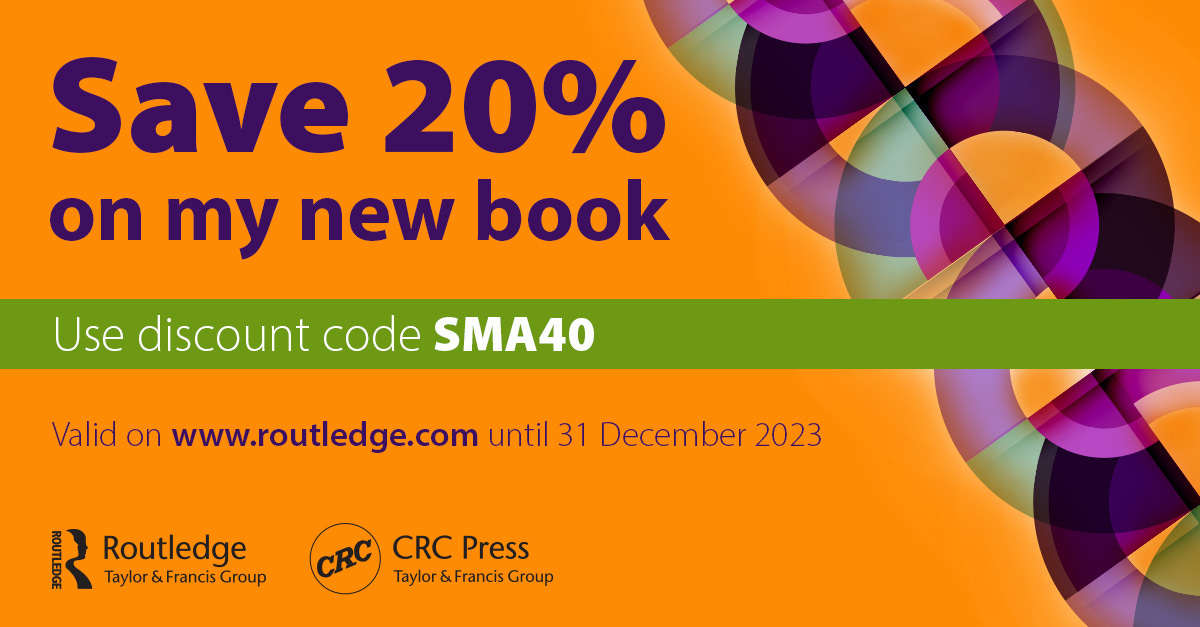
Last week, EdChoice published some results from their recent survey of teachers. The results are not great (certainly they’re not as positive as our smaller survey of hybrid school teachers in 2022!). According to EdChoice,
…teachers expressed more pessimism about the profession, the direction of K-12 education, and challenges facing students than they did when surveyed in the spring, signaling a concerning shift in attitude.
We have heard about teachers having negative feelings for some time. And so I am excited that today is pre-order day for a new book that a group of excellent people and I put together that might provide some hope for the future of the teaching profession. New Pathways in Teacher Preparation and Certification: Perspectives on Alternative Teacher Education Methods is now up on Routledge’s website. Here is the pre-preview. This is a book that combines research in a variety of areas with the practical experience and advice of people working to prepare teachers outside of conventional models. I think it provides some really interesting ideas to consider for anyone interested in teacher preparation, in school choice, and in education policy generally. Our book proposes that teacher preparation and credentialing is *very* one-size-fits all, and explores the implications of that situation:
If teachers are so important (and the book agrees they are), why do we not honor and emulate the very best ones?
What does such a situation mean for schools of choice? If we agree that teachers are so important, can a school truly follow an innovative curriculum/pedagogy if none of its teachers have been prepared to do so?
Are there other ways we might prepare and credential teachers? Is anyone doing interesting things in this area now?
An implication we discuss (and give examples of) is: If we could address some of the issues above, how would that make the profession of teaching better for teachers? Below is an edited excerpt from the Introduction. It just helps set the table for what I think is a very interesting and important discussion over the rest of the book.
***
Most institutions have people in them who are not perfect fits, or who start out as imperfect fits but improve over time. But most organizations are able to pull their employees from multiple places. There’s not one pipeline for office workers, or even college faculty. We have private K12 schools claiming to be really innovative. We ask charter schools to write hundreds of pages about why they’re innovative and unique. But then we populate nearly their entire workforce with people who have been prepared to do things differently, sometimes antithetically, to what these innovative schools propose to do. Most schools of choice, no matter their school culture and pedagogical stance, are filled with teachers who were not prepared to teach in those unique cultures. Most schools of choice – if they really are unique and really are trying to be different in practice – must do large amounts of retraining for most of their new teacher hires. And that is because almost all teachers follow the nearly same preparation path.
Over 1,000 teacher preparation institutions exist in the United States. While many tout their uniqueness, the reality is they follow a somewhat narrow set of curricular approaches. In other words, most American teachers are trained relatively generically almost everywhere. Their actual jobs, however, vary a great deal. As school choice programs and responses to COVID- 19 have grown and evolved across the country, this has become even more evident. Some schools need teachers steeped in project- based learning, some need classically trained teachers, some teachers only ever want to teach online. But (at least in the United States) almost everyone is trained and certified the same way. There is a glaring need for new institutions to address this mismatch.
Educator Michael Strong illustrates the teacher preparation institutions we lack. Using Jaime Escalante, portrayed in the film Stand and Deliver as just one example, he writes about the impact extraordinary teachers could have on the profession if the structure of teacher preparation encouraged or even simply allowed them to formalize their ideas and methods and expand their reach to prepare future teachers. Strong calls this lack of entities that are able to be creative and different within teacher preparation the “Missing Institution.”
Constrained by state teacher licensure laws, by national accrediting bodies, and by inertia, most teacher preparation programs offer functionally similar experiences. This makes little sense at a time when prospective teachers have increasing opportunities to work entire careers in fully online settings, in creative charter schools, or in a growing variety of microschool settings. Many states have “alternative pathways” for prospective teachers to earn teacher certification, but these typically include significant experience in the same content and practices as traditionally trained and certified teachers.
There is an ongoing question over whether state certification of teachers is valuable for students at all. But whatever the answer to that question, it does not follow that teacher preparation has no value for students. It certainly does. The question the authors of New Pathways explore is: What are some other ways we might prepare teachers to serve students in a variety of school settings? In other words, teacher certification ≠ teacher preparation.
Our new book, New Pathways in Teacher Preparation and Certification: Perspectives on Alternative Teacher Education Methods, explores the problems of teacher preparation, certification, and fit from multiple angles. Authors explore, among other topics, the history and economics behind teacher certification/licensure, the philosophical debates around teacher preparation. A set of leading organizations also describe how they are – currently – preparing teachers in several creative ways, for the purpose of preparing teachers for specific kinds of schools, rather than helping them earn state credentials.
Many more such programs could exist, and could be recognized in various ways. There are so many ways to grow and improve the teacher pool in the United States without simply attacking existing colleges of education, but by trying to prompt everyone involved in teacher education to work more creatively – schools, colleges, and policymakers as well.
***
We have authors writing about classical education, Montessori education, Charlotte Mason, online schools, international schools, and microschools, all of which would ideally be staffed by teachers who had been prepared for those particular environments. We also have authors discussing the history, philosophy, politics, and economics of teacher preparation and licensure. I hope you will give it a read. Here is a coupon to help incentivize you!





